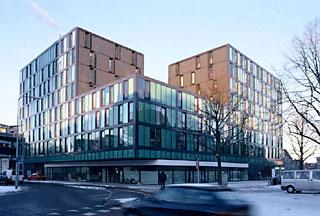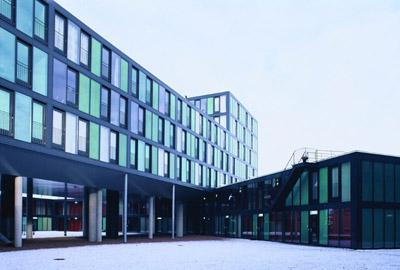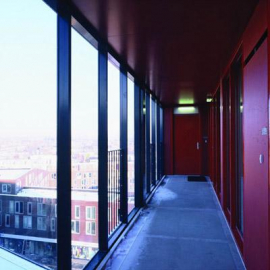Schots 1 and 2
Further to winning the Europan 3 competition, in 1994 S333 were commissioned to develop a structure plan for the CiBoGa terrain, a 14-h, post-industrial site on the edge of the centre of Groningen. S333 identified the site as being part of a larger urban ring structure of strategic importance to the citys ecological structure. The urban plan adopted by the city proposes 13 schotsen compact building blocks eroded internally by new forms of semi-public space , which float in an open landscape that operates as a filter zone between the city centre and the 20th-century housing extensions.
Schots 1 and 2 resolve the conflict between the desire for spatial openness and the requirements for programmatic intensification by creating a volumetric landscape of 300 underground parking places, 110 winter gardens, 105 apartments, 44 houses, 14 patios, eight shops, four vertical gardens, three collective roof gardens, two courtyards, two supermarkets, and one medical centre. Schots 1 and 2 could be seen as a contemporary reading of the megaform. This is a large complex system that extends horizontally and is capable of inflecting the existing urban landscape. It acts as a continuation of the surrounding topography and orients itself towards the densification of the urban fabric.
Therefore Schots 1 and 2 are conceived as a single building form, which is nonetheless sculpted by flows that allow the blocks to evolve independently above street level. Schots 1, a robust multi-storey block, is clad entirely in floor-to-ceiling glass with varying levels of transparency, reflection and opacity. Filling the awkward site, rather than imposing its mass directly on its surroundings the building concentrates the density at three points, creating in-between roof terraces that mediate with the context.




